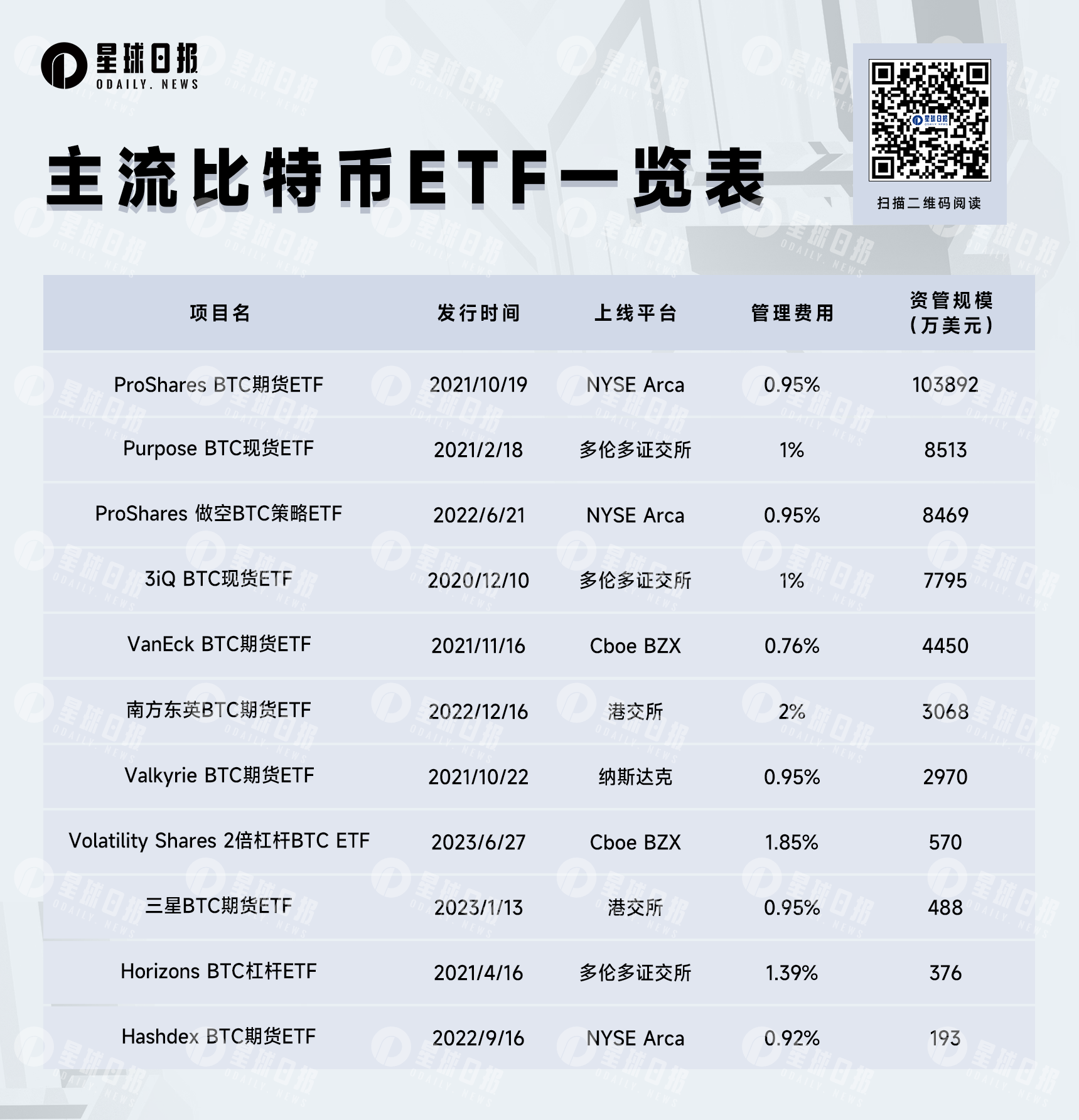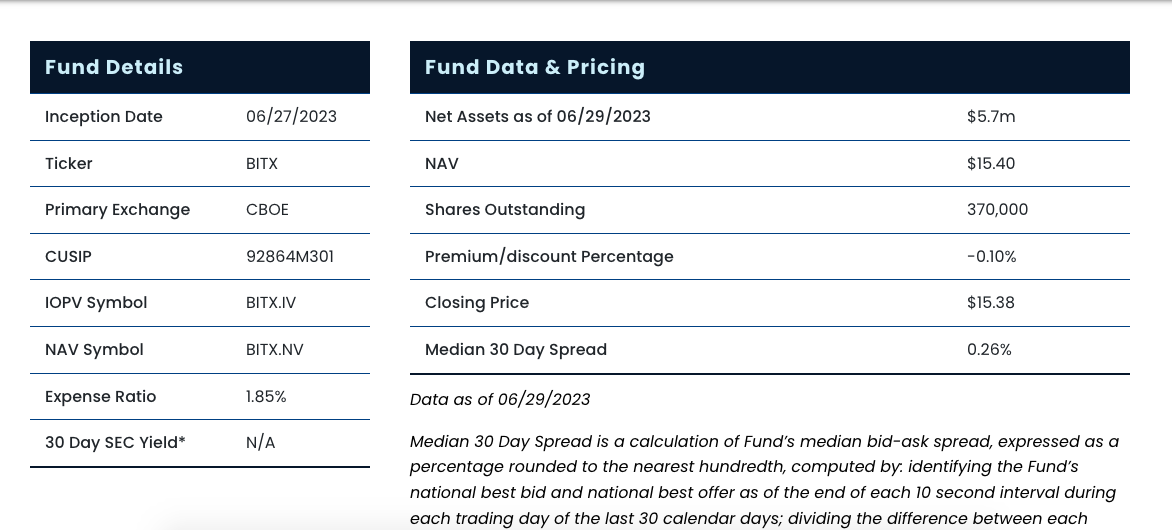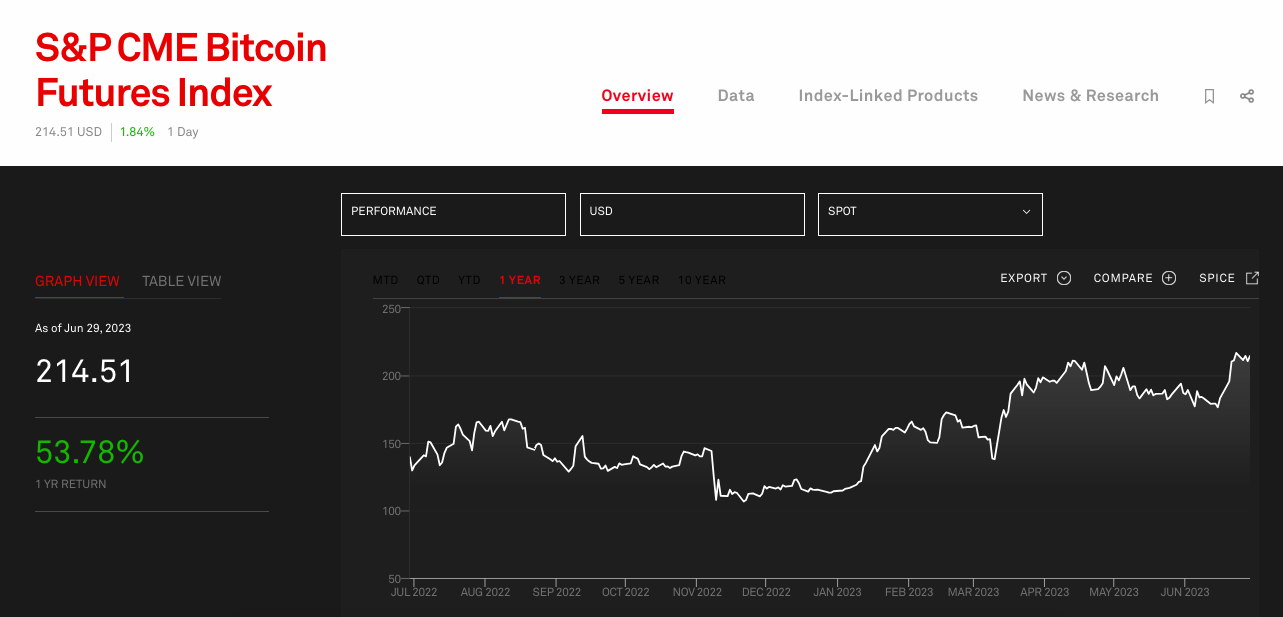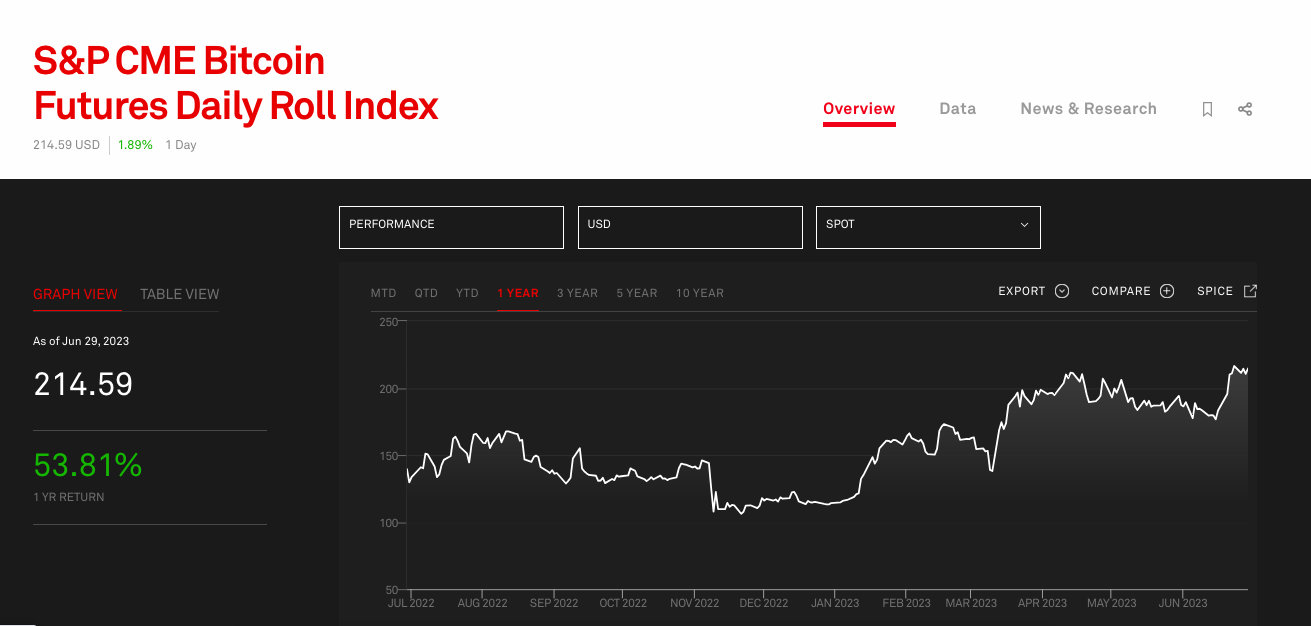高値でオープンして安値で取引できる、米国初のレバレッジBTC ETFは市場の期待に応えた?
プロデュース | デイリー
著者 | Odaily 秦暁峰

米国初のレバレッジ型仮想通貨ETFは上場から3日間で予想を下回った。
6月27日(今週火曜日)、米国のETF発行会社ボラティリティ・シェアーズが発行した「2×ビットコイン・ストラテジーETF」(2倍レバレッジ・ビットコイン・ストラテジーETF)がCBOE傘下のBZX取引所に正式に上陸し、取引が開始された。
Odailyのモニタリングによると、上場初日に11万株が発行され、発行価格は15ドル、純資産額は165万ドル、初日の出来高は550万ドルと過去最高となった。今年発行された暗号化ETFの初日取引高。 (日々のメモ:CSOP BTC先物ETFの初日の取引高はわずか83万米ドル、サムスンのビットコインETFはわずか9万8000米ドルだった)。
しかし、その後の 2 営業日で、ボラティリティのレバレッジ ビットコイン ETF の取引高は急落し始め、1 日の取引高は 30 万米ドル未満となりました。昨日 (29 日) は 21,768 株が取引され、取引高は 234,000 米ドルとなりました。以下に示すように、発行部数は徐々に増加し、現在発行済株式数は 370,000 株となり、純資産価値は 570 万ドルまで増加しました。

レバレッジビットコインETFとは何ですか?ボラティリティ・シェアーズがSECに提出した申請書類によると、今回発行されたETFが求める投資成果は、S&P CMEビットコイン先物デイリー・ロールオーバー・インデックス(以下「ロールオーバー・インデックス」)の1日の超過リターンの2倍に相当する。 )。たとえば、エクステンション指数が毎日 1% 上昇する場合、ETF の正味価値は 2% 増加する必要があり、エクステンション指数が 1% 低下する場合、ETF の正味価値は 2% 低下する必要があります。
「ロール インデックス」は、CME ビットコイン先物市場のパフォーマンスを測定するために使用され、当月の先物契約と翌月の先物契約の間で毎日リバランスが行われます。理解していなくても問題ありません。CME のビットコイン先物デイリー ロールオーバー インデックスは、実際にはデータとトレンドの点で基本的に CME ビットコイン先物インデックスと同じであることを知っておく必要があります。どちらもビットコイン スポット価格のトレンドの影響を受けます。 。次のように:


したがって、今回発行されるレバレッジETFは、過去に発行されたビットコイン先物ETFのベンチマーク指数と実は同じであり、すべて先物データです。
2倍のリターン目標を達成するために、ETFはファンドの総資産の25%を使ってCMEビットコイン先物(ロングになる)に投資する完全子会社を設立し、残りの資産は現金で直接投資される。米国政府証券、マネーマーケットファンド、社債証券などの金融商品や高品質証券など、これらの資産は流動性を提供するため、または将来の証拠金として使用されます。

公式ウェブサイトの情報によると、レバレッジETFは現在、7月23日満期のCMEビットコイン先物1,070万8,000ドル相当、8月23日満期のCMEビットコイン先物62万6,000ドル相当、現金同等物569万ドル相当を保有している。比率の観点から見ると、先物ポジションの合計はファンドの正味価値のちょうど 2 倍であり、二重レバレッジ エクスポージャーのリスク要件を満たすことができます。
しかし、筆者は今回もレバレッジETFの市場規模はそれほど大きくならないだろうと考えている。
まず第一に、分配ノードが良くなく、均質な製品には明るい点がありません。 2倍レバレッジETFは本質的には先物ETFであり、米国市場では過去2年間にプロシェア、ヴァンエック、ヴァルキリー、ハッシュデックスなど多くのビットコイン先物ETFが発行されており、CMEもかなり前からビットコイン先物を開始している。過去 2 日間の取引高からわかるように、少し味気なく、先行者利益があまりありません。
また、運用手数料は投資家の選択に直接影響する重要な要素であり、ボラティリティ株式の運用手数料はETFの中でも比較的高額です。 Odaily の統計によると、CSOP のビットコイン先物 ETF の運用手数料は現在 ETF 市場で最も高く、2% に達していますが、過去 2 年間に米国とカナダで設定された ETF の運用手数料は一般に 1% 程度であり、ボラティリティ株式の管理手数料は 1.85% と高い 現実は魅力的ではありません。
最後に、レバレッジETFの失敗例もボラティリティ株に警鐘を鳴らしている。早くも2021年4月16日、世界初の仮想通貨レバレッジETFであるベータプロビットコインETF(コード:HBIT)がトロント証券取引所に上場されました。 ETF市場は発足後、業績が低迷し、過去1年間の1日平均取引高はわずか5,769株(取引高10万米ドル)、総資産規模は376万米ドルにとどまり、中途半端な状況にありました。 -今年4月、発行会社ホライゾンズはついにETFを閉鎖した。
これにはカナダの金融市場における独自の制限がありますが、特に同時期にカナダで発売された2つのスポットETFと比較すると、レバレッジETFには高い発展の可能性がないことも証明されています—目的のBTCスポットETF(8,513万ドル)と3iQ BTC スポット ETF (7,795 万ドル)、これは仮想通貨スポット ETF が投資家にとってより魅力的であることを証明するのに十分な理由です。



